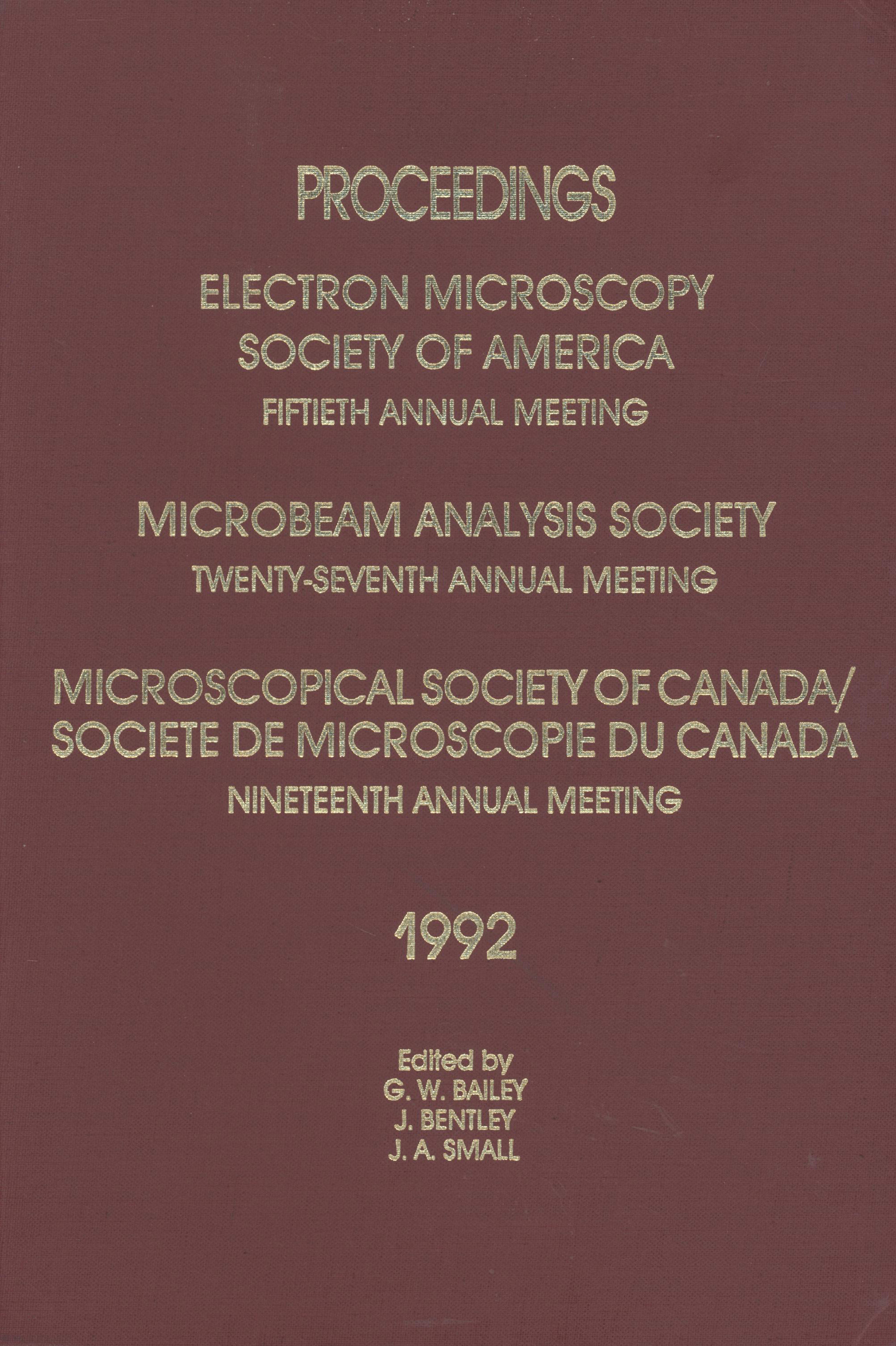No CrossRef data available.
Article contents
Cathodoluminescence-Mode Scanning Electron Microscopy of GaAs Alloys and Diodes
Published online by Cambridge University Press: 18 June 2020
Extract
Cathodoluminescence (CL)-mode scanning electron microscopy studies were made on n-type GaAs substrate crystals, and on liquid (LPE)- and vapor-phase-epitaxial (VPE) GaAs. The observations were carried out in a Stereoscan S4-10 equipped with a separate CL detector and signal processing channel. Broad-band detection was employed, with the CL radiation from the specimen focused directly onto a photomultiplier (RCA type 7102) with S-l spectral response. The CL was excited by 30 kV electrons, with beam currents typically about 10 nanoamperes.
Figure 1 shows a low dislocation-density (˜103/cm2) substrate crystal. The CL image contains only heavy horizontal striations, which may be attributed to varying concentrations of dopant formed during growth, and a few contrast effects related to surface features (cf., emissive-mode (SE) image).The high dislocation-density (˜105/cm2) GaAs substrate in Figure 2 shows in addition a distribution of discrete dark spots and short line segments, identified as emerging dislocations: Dislocation etching of the specimen revealed a distribution and density of dislocations comparable to the CL-image dark spots.
- Type
- Semi Conductors
- Information
- Copyright
- Copyright © Claitor’s Publishing Division 1975


